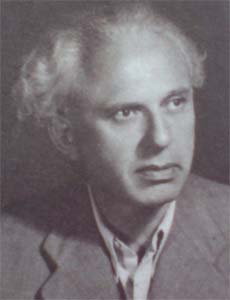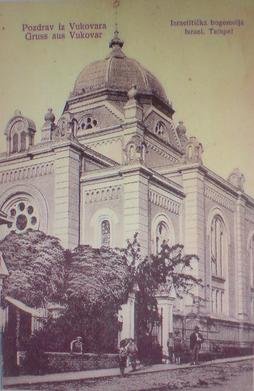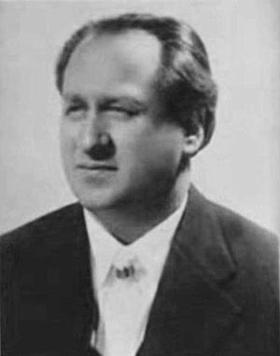
The history of the Jews in North Macedonia stretches back two thousand years, beginning during Roman antiquity, when Jews first arrived in the region. Today, following the Holocaust and emigration, especially to Israel, around 200 Jews remain in North Macedonia, mostly in the capital, Skopje and a few in Štip and Bitola.

The history of the Jews in Croatia dates back to at least the 3rd century, although little is known of the community until the 10th and 15th centuries. According to the 1931 census, the community numbered 21,505 members, and it is estimated that on the eve of the Second World War the population was around 25,000 people. Most of the population was murdered during the Holocaust that took place on the territory of the Nazi puppet state called the Independent State of Croatia. After the war, half of the survivors chose to settle in Israel, while an estimated 2,500 members continued to live in Croatia. According to the 2011 census, there were 509 Jews living in Croatia, but that number is believed to exclude those born of mixed marriages or those married to non-Jews. More than 80 percent of the Zagreb Jewish Community were thought to fall in those two categories.

The history of the Jews in Serbia is some two thousand years old. The Jews first arrived in the region during Roman times. The Jewish communities of the Balkans remained small until the late 15th century, when Jews fleeing the Spanish and Portuguese Inquisitions found refuge in the Ottoman-ruled areas, including Serbia.

The history of Jews in Bosnia and Herzegovina spans from the arrival of the first Bosnian Jews as a result of the Spanish Inquisition to the survival of the Bosnian Jews through the Holocaust and the Yugoslav Wars. Judaism and the Jewish community in Bosnia and Herzegovina has one of the oldest and most diverse histories in the former Yugoslav states, and is more than 500 years old, in terms of permanent settlement. Then a self-governing province of the Ottoman Empire, Bosnia was one of the few territories in Europe that welcomed Jews after their expulsion from Spain.

The Old Synagogue in Dubrovnik, Croatia, is the oldest Sefardic synagogue still in use today in the world and the second oldest synagogue in Europe. It is said to have been established in 1352, but gained legal status in the city in 1408. Owned by the local Jewish community, the main floor still functions as a place of worship for the High Holy Days and special occasions, but is now mainly a city museum which hosts numerous Jewish ritual items and centuries-old artifacts.

Full diplomatic relations between Croatia and Israel were established on April 9, 1997 following Croatia's independence from SFR Yugoslavia. Croatia has an embassy in Tel Aviv and honorary consulates in Ashdod, Caesarea, Jerusalem and Kfar Shmaryahu. Israel has an embassy in Zagreb. Relations between the two countries are described as friendly and highly cooperative. In recent years, Croatia and Israel intensified bilateral relations and cooperation in the field of defence and security. Croatia is one of the countries Israel occasionally turns to inside the EU to advocate on its behalf and it generally abstains or votes with Israel on key EU votes at the UN. Israeli President Reuven Rivlin described Croatia in 2019 as "Israel's strong ally in the EU, the UN and other multilateral organizations."

The Zagreb Synagogue was the main place of worship for the Jewish community of Zagreb in modern-day Croatia. It was constructed in 1867 in the Kingdom of Croatia-Slavonia within the Austrian Empire, and was used until it was demolished by the Ustaše fascist authorities in 1941 in the Axis-aligned Independent State of Croatia.

The Holocaust in the Independent State of Croatia involved the genocide primarily of Jews, and also the genocide of Serbs and Romani (Porajmos), within the Independent State of Croatia, a fascist puppet state which existed during World War II, was led by the Ustaše regime, and ruled an occupied area of Yugoslavia which included most of the territory of modern-day Croatia, the whole of modern-day Bosnia and Herzegovina and the eastern part of Syrmia (Serbia). Of the 39,000 Jews who lived in the NDH in 1941, the United States Holocaust Memorial Museum states that more than 30,000 were murdered. Of these, 6,200 were shipped to Nazi Germany and the rest of them were murdered in the NDH, the vast majority in Ustaše-run concentration camps, such as Jasenovac. The Ustaše were the only quisling forces in Europe who operated their own extermination camps for the purpose of murdering Jews and members of other ethnic groups.
Slobodan Lang was a Croatian physician, professor, diplomat, Member of Parliament, politician and Adviser for Humanitarian Issues of the first Croatian president, Franjo Tuđman.

Stjepan Betlheim was a Croatian psychiatrist and psychoanalyst.

The Vinkovci Synagogue was a synagogue in Vinkovci, Croatia. It was among the largest and the most prestigious synagogues in Croatia.

Vukovar Synagogue was the main synagogue of the Jewish community in Vukovar, Croatia, after the first smaller synagogue was sold to the Calvinist church in 1910. It was constructed in 1889 in the Kingdom of Croatia-Slavonia, within the Austria-Hungary.

Bernard Grüner was a Croatian-Jewish composer, hazzan of the Dohány Street Synagogue and chief hazzan of the Jewish Community in Zagreb.
Ivica "Ivina" Hiršl was a Croatian communist and Mayor of Koprivnica who was killed during the Holocaust.
Dr. Branko Švarc (1894–1972) was Croatian judge and Mayor of Koprivnica.

Zdenka Rubinstein was a Croatian Jewish operatic soprano.
Dr. Karlo Weissmann was a Croatian physician and founder of the first sanatorium in Osijek.

Bjelovar Synagogue is a former synagogue in Bjelovar, Croatia, which is currently a cultural center.
The Gospić concentration camp was one of 26 concentration camps in the Independent State of Croatia during World War II, established in Gospić.
Izrael Kohn (1885–1941) was the last rabbi of the Koprivnica Synagogue.













